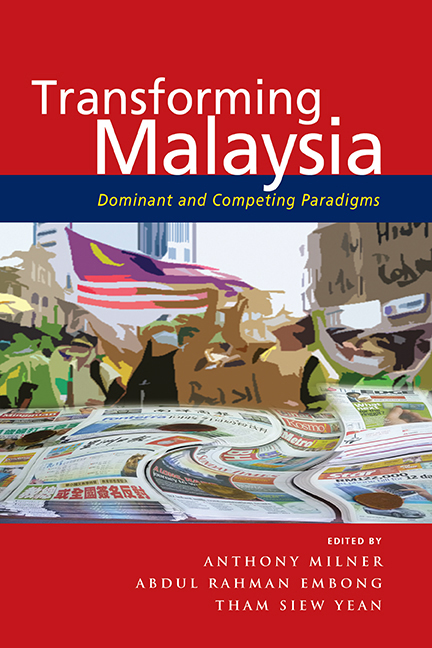Book contents
- Frontmatter
- Contents
- List of Tables and Figures
- Preface
- Acknowledgements
- List of Contributors
- 1 Introduction
- 2 Race and Its Competing Paradigms: A Historical Review
- 3 Knowledge Construction, the Rakyat Paradigm and Malaysia's Social Cohesion
- 4 Race Paradigm and Nation-Building in Malaysia
- 5 Race-Based Paradigm in Poverty Eradication and Income Distribution Analysis and Policy
- 6 Foreign Workers in Malaysia in the Post-Independence Era: Race Paradigm in State Policy, Academic Writings and Public Discourse
- 7 Trade Policy Formulation in Malaysia: Navigating between the Economic and Race Paradigms
- 8 National Security Conceptions and Foreign Policy Behaviour: Transcending the Dominant Race Paradigm?
- Index
2 - Race and Its Competing Paradigms: A Historical Review
Published online by Cambridge University Press: 21 October 2015
- Frontmatter
- Contents
- List of Tables and Figures
- Preface
- Acknowledgements
- List of Contributors
- 1 Introduction
- 2 Race and Its Competing Paradigms: A Historical Review
- 3 Knowledge Construction, the Rakyat Paradigm and Malaysia's Social Cohesion
- 4 Race Paradigm and Nation-Building in Malaysia
- 5 Race-Based Paradigm in Poverty Eradication and Income Distribution Analysis and Policy
- 6 Foreign Workers in Malaysia in the Post-Independence Era: Race Paradigm in State Policy, Academic Writings and Public Discourse
- 7 Trade Policy Formulation in Malaysia: Navigating between the Economic and Race Paradigms
- 8 National Security Conceptions and Foreign Policy Behaviour: Transcending the Dominant Race Paradigm?
- Index
Summary
Can Malaysian society and politics ever move beyond a race-based paradigm? The need to do so has been stressed by many of those who are working to move Malaysia to a new developmental stage — but, as the Introduction to this book points out, the potency of this paradigm should not be underestimated. How then has the race paradigm become embedded, and in what ways has it been contested and defended? Is it possible to conceptualize Malaysians in terms other than “Malay”, “Chinese” and “Indian” (with allusions to a list of further indigenous groupings)? This last question is often asked. Some analysts have begun to envisage a national “transethnic solidarity” (Loh 2010, p. 11; Mandal 2004, p. 49), a “growing feeling of multi-racialism” (Gomez 2004, p. 21), a move from a “plural to a multiethnic society or nation” (Ong 2009, p. 478), a “nation of equal citizens” (Ong 2009, p. 478), a more “inclusive citizenship” (Hefner 2001, pp. 45, 48), an emerging “language of inclusion and civility” (Abdul Rahman 2001, pp. 72, 81), and a greater stress on “cosmopolitanism” (Yao 2003). In the past, there have been attempts to imagine a “Malayan” citizenship, a “Malayan Union”, a multiethnic identity under a “Melayu” label, a “Malaysian Malaysia”, a “Bangsa Malaysia” (a Malaysian “race” or “nation”) — and in recent years the federal government constantly invoked the idea of a “1Malaysia”.
The formulation or countering of these concepts has of course been shaped by specific economic or political circumstances — the aftermath of the Japanese Occupation, the Communist Insurgency, the 1969 race riots, dramatic downturns in the economy, and so forth. Insisting that ideas and the way they are debated are significant and deserving of analysis in their own right is not to deny their context. The issue is one of focus, and our concern is to examine the manner in which the race paradigm came into being, and then a number of the various attempts that have been made to replace it. To recover both the history of the race paradigm and the range of other conceptualizations operating or advocated in the past makes sense right now — not only for historical purposes, but because of the contribution it could make to the practical deliberations at present taking place in Malaysia.
- Type
- Chapter
- Information
- Transforming MalaysiaDominant and Competing Paradigms, pp. 18 - 58Publisher: ISEAS–Yusof Ishak InstitutePrint publication year: 2014



